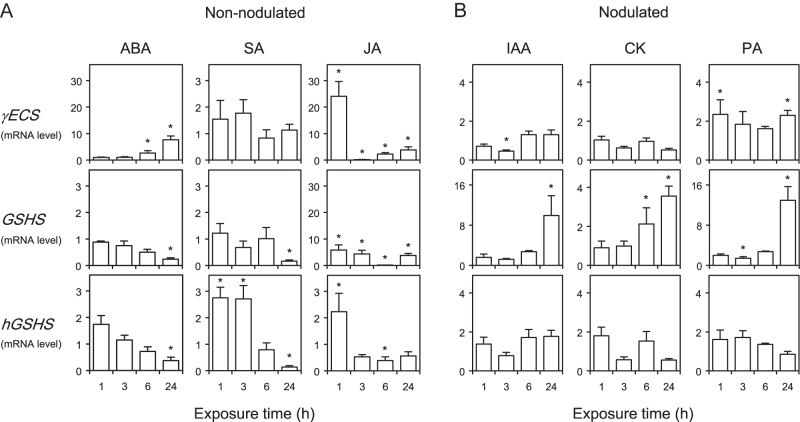Fig. 4.
Time-course patterns of expression of thiol synthetase genes in roots of Lotus japonicus in response to hormones. (A) Non-nodulated plants were supplied with 50 μM of abscisic acid (ABA), jasmonic acid (JA), or salicylic acid (SA) in the rooting medium. (B) Nodulated plants were supplied with 50 μM of indole-3-acetic acid (IAA), cytokinins (CK), or polyamines (PA) in the rooting medium. Steady-state mRNA levels of γ-glutamylcysteine synthetase (γECS), glutathione synthetase (GSHS), and homoglutathione synthetase (hGSHS) were normalized to ubiquitin and expressed relative to those of control plants. These were treated during the same time and with identical concentrations of NaOH (IAA and CK), ethanol (ABA, SA, and PA), or dimethylsulphoxide (JA) to those used to prepare the stock solutions of hormones. The mRNA levels of control plants were given a value of 1. All data are means ± SE of four or five replicates, corresponding to RNA extractions from different roots of two series of plants grown independently (two or three replicates per series). Asterisks denote upregulation (>2-fold) or downregulation (<0.5-fold) of the genes.

